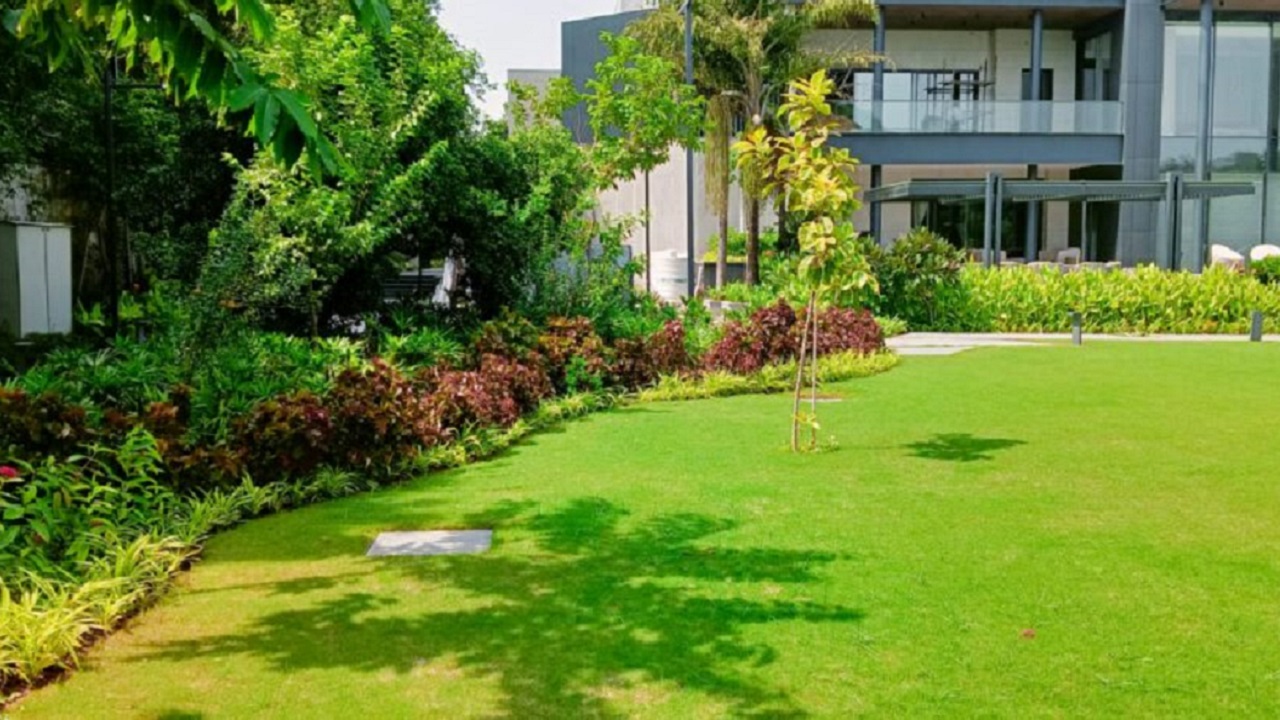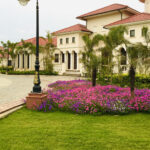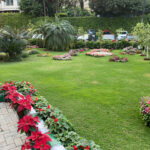WHAT IS RESIDENTIAL LANDSCAPING ?
Residential landscaping is the art and practice of enhancing the visual appeal and look of the space around a home. Each house should reflect the inhabitants, as should the surrounding environment. It embodies a visitor’s initial perception of the house and its occupants. It should be warm and welcoming when first encountered, guiding visitors directly to the front door. The landscape should also have a purpose. An aesthetically planted home not only makes the family who live there happy, but it also makes the neighborhood better and raises the property’s worth.
Having a lush yard is simply one aspect of landscaping. The creation of a beautiful and aesthetically pleasing outdoor space is a complex and sensitive procedure. A carefully thought-out home landscape design may make your property feel crozier and more private, especially if you have a large property. Many people believe that all their home landscape needs to look amazing is some excellent furnishings and potted plants. However, if you speak with the specialists at your neighborhood Clarence landscape Maintenance Company and inquire about the techniques for designing lovely landscapes, they will outline the primary principles they employ to turn arid terrain into a lovely refuge.
BASIC PRINCIPLES OF RESIDENTIAL LANDSCAPING
UNITY
- Unity, or the recurrence and coherence of designs, is the most important design principle. By using similar items, such as plants and décor, repeatedly across the landscape, repetition helps to create unity in your design. By forming a single subject or unit out of various landscape components, consistency promotes unity.
BALANCE
- Simple equality is what balance in residential landscape design refers to. In the design, there are two different types of balance: symmetrical balance and asymmetrical balance. A symmetrical balance occurs when both sides remain equal. However, in an asymmetrical balance, the composition of the landscape is balanced with various components and things that have about the same fictitious weight.
CONTRAST AND HARMONY
- Combining creative elements or employing complementary colors can create contrast and harmony. Contrast is utilized to draw attention to a certain feature of your environment, whereas balance makes the scene appear more unified and smooth. When juxtaposed, features that contrast draw the viewer’s attention.
COLOUR
- Your landscape design increases realism through color. Warm hues like red and orange give the impression that something is approaching you. But cold hues like blue and green appear to be fading. Perspective is created using the colors blue and green.
TRANSITION
- Transition in landscaping is indicated by gradual plant size or color intensity changes. Simply put, it’s a gradual change. It can also be applied to the texture, shape of leaves, and size of various elements.
LINE
- The mother of all basics – lines – are a powerful design element that defines rooms and connects people with the scene. Lines are used almost everywhere, including creating beds, sidewalks, textures, and perspectives. Lines are also used to create the illusion of depth and distance.
PROPORTION
- The magnitude of one element in relation to another is referred to as its proportion. This is the most obvious of the home landscape design ideas, yet it still requires some preparation and thought. All components of a landscape design must be in the appropriate proportions.
REPETITION
- Repetition has a direct relation to unity. It’s nice to have more elements and shapes in the garden, but repeating the same elements gives your design different expressions. Too many irrelevant things can make your proposal unplanned and confusing. Also, don’t use one feature too much because overusing one element can make your design boring, uninteresting, and monotonous.
BENEFITS OF RESIDENTIAL LANDSCAPING
BOOTS THE VALE OF PROPERTIES
- In order to sell a home, first impressions are crucial, and landscaping can significantly influence sales. “Good landscape design can increase the value of your home by up to 20% if you’re thinking about selling.” Robert Vila. Given that the average home price in Indianapolis, according to Zillow, is $227,000, landscaping might increase your property’s worth by as much as $45,000.
IMPROVED QUALITY OF LIFE
- The interior décor of the home is improved by landscaping. It seamlessly joins the inside and outside. Studies show that being near greenery enhances mental health, reduces stress, and eases anxiety. Spending time outside has been shown to boost overall health and wellness
INCREASING PHYSICAL ACTIVITY
- Physical activity can be increased via gardening and landscaping. They call for modest physical activity, which can slash between 150 and 600 calories from the body each hour. The heart rate and blood flow can both be raised through gardening and landscaping.

CONCLUSION
Look no farther than us if you’re seeking for a qualified and trustworthy landscape company to raise the appeal and value of you are residential. Among the residential landscaping services we provide are:
Design and installation of landscape elements, including hardscapes, irrigation systems, lighting, and plants, trees, and flowers.
Maintenance and care of an established landscape, including mowing, fertilizing, weeding, mulching, and other procedures.
Seasonal services like leaf raking, snow removal, and spring and fall clean-ups.
From office buildings and shopping malls to hotels and schools, we are equipped to manage projects of every scale and nature in the commercial sector. We collaborate with you to comprehend your demands, finances, and goals in order to produce results that are superior to your expectations
Different plant species can thrive and be nurtured through landscaping when given enough water, healthy soil, and sunlight. Reduce Air Pollutants – Plants purify the air around your home by removing smoke, dust, and other toxins, and they also generate oxygen…







